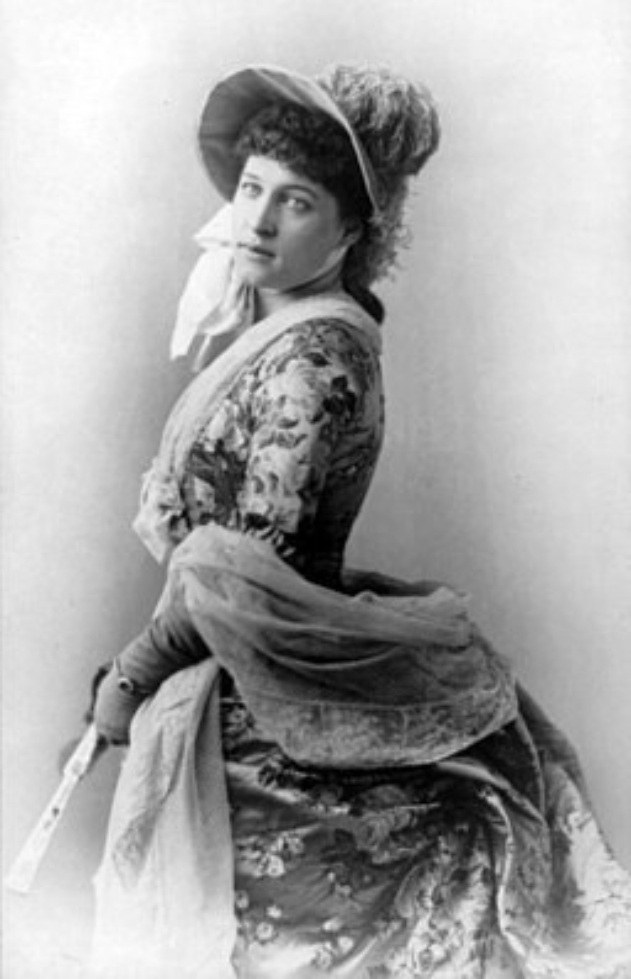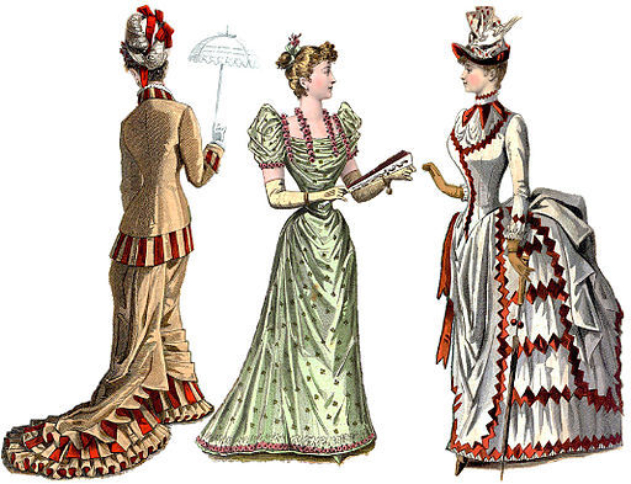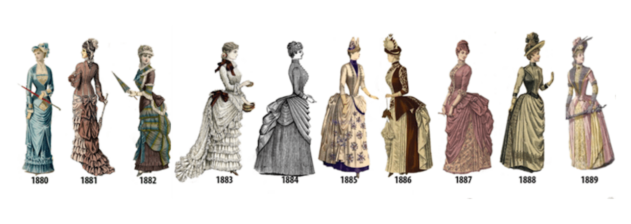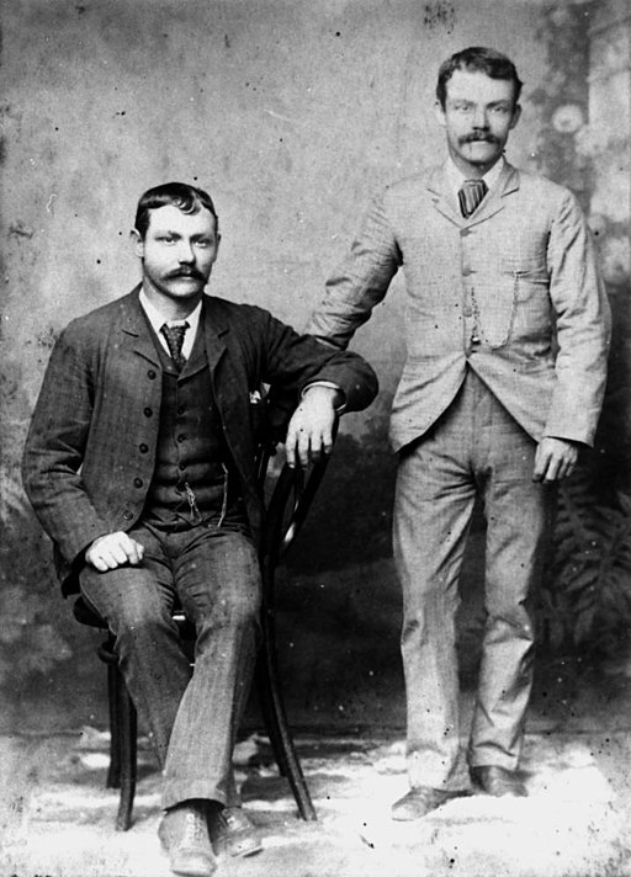1880s fashion: the decline of the bustle
Lillie Langtry was born as Emily Charlotte Le Breton (13th October 1853), on the island of Jersey. She moved to London in 1876, after marrying Edward Langtry. By 1881 she had become a well-known and respected actress, going on to become a successful producer. But what influence did she have on British fashion? And how might this knowledge help you to date your old photographs?

https://commons.wikimedia.org/wiki/File:Lillie_Langtry_by_Sarony_cph.3b05692.jpg
1880s Women’s Fashion
Rigid style with decorations
In this decade there were two distinct fashions that had a number of features in common:
- the focus on the design of the clothing was at the back of the body
- designs heavily restricted a woman’s body and her ability to move
- there was heavy use of trims and decoration in both day and evening wear.
The first line of fashion was the continuation of the “princess line”, discussed in our article on the 1870s. This style almost caused the bustle to disappear from the fashion scene, but it re-emerged in 1883. This time it was a much sturdier protrusion from the lower back and became the second style of the 1880s, the “Lillie Langtry” bustle, which remained popular until the 1890s.

https://commons.wikimedia.org/wiki/File:1880s-fashions-overview.jpg
The Lillie Langtry Bustle
This bustle was probably very uncomfortable to wear! It was made from a series of metal bands, giving it a very rigid shape. The saving grace of this style was that these bands were designed to fold up so that the wearer could sit down
Bodices and dresses were designed to have tight sleeves and stiff collars (often boned, with whale bones), and became narrower at the shoulders. The tight sleeves developed small puffs at the top, which went on to become the ‘leg-of-mutton’ sleeves of the 1890s. Hemlines were usually only just above the floor and designs often imitated men’s fashion with panels designed to look like jackets and vests.
To make the distinctive shape of the bustle more obvious, jackets and coats were more often worn, as opposed to cloaks and capes. High-necked (knitted) jerseys also became popular. All of these garments were very heavily embellished. There was a particular liking for dark, sumptuous colours and materials, reminiscent of furniture fabrics. When dating photographs of your ancestors, the colours will be difficult to distinguish, but the silhouette and embellishment should help you to pin this decade down.
Hairstyles became more elegant, with hair tied up as opposed to falling loose, and hats were worn on top of the head. Millinery became very decadent, using vast numbers of birds' feathers and causing some species to become endangered. This led to the formation of the Royal Society for the Protection of Birds (RSPB) in 1889!

The Aesthetic Movement
As a response to the tight-fitting, extremely uncomfortable bustles and corsets, the tea gown became popular. Tea gowns were looser, with no corset, and much more comfortable to wear. The name comes from being the garment of choice for women to wear at home or when they invited friends for tea.
This style was developed by the Aesthetic Movement – a movement ridiculed by the press – who wanted to design more humane clothing for women that gave them a simpler beauty based on craftsmanship and styles that had been popular historically. The designs were developed by the Pre-Raphaelite artists for their models.
1880s Men’s Fashion
Dinner Jackets, Frock Coats and Morning Coats
In the 1880s, men’s style aimed to create a slim line that emphasised the height of the man. For formal occasions, a frock coat, with a seam around the waist and a full skirt, was worn. In the evening, this became a tailcoat and double-breasted waistcoat, with a white bow tie.
A new style for the 1880s was the dinner jacket. This was a less formal version of a lounge jacket and was worn with a black bow tie. It became known as a tuxedo in the USA.

A more casual, adaptable choice was the morning coat. These also had a seam at the waist but were cut away at the front. On formal occasions, a black coat could be worn and on less formal ones, a shorter, tweed version could be worn.
The most informal choice was still the good old sack coat. By the 1880s, it had become a lounge suit.
In our next blog, we help you date your photos from the ‘naughty nineties’!